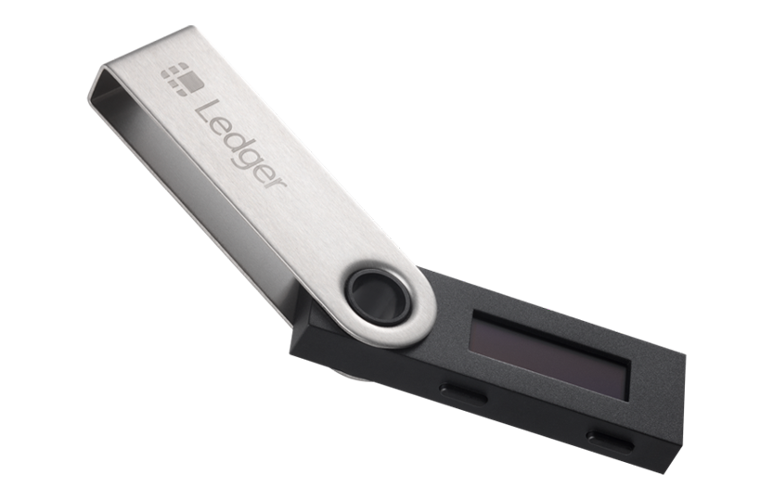
Understanding Cryptocurrency Wallets: A Comprehensive Guide

Understanding Cryptocurrency Wallets: A Comprehensive Guide
Quick Links
If you want to own cryptocurrency -–either because you’re looking to invest or because you want to spend money online—you’re going to need a crypto wallet. Using one will let you keep your crypto safe, while also allowing you to make transactions.
What Is a Crypto Wallet?
A crypto wallet is nothing like your regular, real-life wallet. Right now, you could probably reach for your wallet, open it up and either take out physical money or put some back in—or at least some kind of payment card. A wallet doesn’t protect your money in any way, except maybe from the weather or getting lost in your bag.
A crypto wallet is a different beast entirely. A crypto wallet is more or less your identity when you buy Bitcoin or any other cryptocurrency: its address is how your buying and selling is recorded on the blockchain (and also the reason these currencies aren’t anonymous ).
Related: What Is Cryptocurrency?
Because of this, technically you don’t need a wallet when doing anything with cryptocurrencies: you could just leave them on the exchange you bought them, or write down the wallet address and passkeys and hope you don’t forget where you left them. This method is jokingly referred to as a paper wallet and a great way to make sure you’ll never see your cryptocurrency again.
It’s better to be safe than sorry when dealing with these sums of money, so using a software wallet is a good idea. Luckily, you have plenty of options. For example, many crypto exchanges come with built-in wallets, meaning you can trade and store from a single interface (Coinbase is an example of this).

Coinbase
That said, plenty more options don’t do more than just provide a simple graphical interface where you can see what you have and very little else. If you prefer to keep your exchange and your wallet separate, wallets like Electrum and Mycelium may be a good choice for you.
Hot Wallets vs. Cold Wallets
All the above are examples of software wallets, also known as hot wallets or hot storage. Hot storage means that the wallet is connected to the internet and you can use it to directly pay for things, as well as acquire new cryptocurrencies in real-time.
On the flipside of hot storage is, unsurprisingly, cold storage. This means that the wallet is not connected to the internet and really all it does is store your keys and that’s it. In almost all cases, this means you’re using a hardware wallet. This is usually some kind of USB key that you plug into your computer and which then gives you access to your exchange of choice.

Paper wallets—where you write down your access codes on a piece of paper—technically are also a form of cold storage. As you can imagine, this isn’t particularly safe, especially if you’re the type to leave scraps of paper around the house.
Hardware vs. Software Wallets
Though there is a definite line between hardware and software wallets, the line blurs a little at times. For example, you can use a hardware wallet to access your hot storage, and you can use a software interface to update your cold storage.
Aside from these fringe cases, though, you can assume that software wallets are meant for hot storage and hardware wallets for cold. In practice, this means that you use your software wallet to trade in crypto and to make purchases with it. Cold storage is more for people that are looking to buy crypto and hold in hopes of a major payday somewhere down the line.
If you’re not sure which one is the best for you, you might want to consider it like this: if you want to be able to see in real-time what your crypto is doing and like being glued to the graphs showing its performance, a hot wallet is the way to go.
If you just want to buy some crypto on the cheap right now and then cash in if you ever catch wind of a massive upswing—or even just because you want to hold for the sake of holding— then cold storage is the best option for you.
Whichever option you choose to go with, just make sure that you know where your passkeys are, and that you’ve kept the passwords for your wallet safe; you don’t want to lose your cryptocurrency because you misplaced your keys…
Also read:
- [New] 2024 Approved Ultimate Flashy Game Collection - Quick and Lightweight
- [New] Elite Influencer Economy Leaders
- [New] How to Capitalize on Youtube Shorts Must-Knows, Earning Prospects for 2024
- [New] Tutorial Unmask Your YouTube Audience
- [Updated] 2024 Approved How to Forge Strong Content Partnerships on YouTube
- 2024 Approved Expert Strategies for Effective Online Image Trimming
- Boosting Productivity: The Power of Combining ONLYOFFICE DocSpace with ChatGPT Technology
- Convert WMV File in M4A Format Free - Online Converter by Movavi
- Defending Artwork Authenticity Against Generative AI Using Nightshade Solutions
- Dev Life Altered by Artificial Intelligence
- Discover the Best 8 Cryptocurrency Integration Plugins to Supercharge ChatGPT
- How Can You Tell if ChatGPT Is Currently Unavailable? Discover 5 Methods
- In 2024, How to Simulate GPS Movement in AR games On OnePlus 12? | Dr.fone
- In 2024, Liberating Laughter From Lockdown 20 Humorous FB Incarceration Moments
- Leading 7 AI Content Creation Sites: The Ultimate Guide
- Leveraging ChatGPT for Tailored Training Programs in the Fitness Industry
- Navigating On-Chip Machine Learning: Insights Into Its Mechanics and Applications
- Uncover & Purge Window's Empties: A Compre Cooking Instruction
- Unveiling the Ultimate Collection of AI Note Taking Solutions: Top Picks
- Title: Understanding Cryptocurrency Wallets: A Comprehensive Guide
- Author: Jeffrey
- Created at : 2024-11-14 23:01:34
- Updated at : 2024-11-18 18:05:21
- Link: https://tech-haven.techidaily.com/understanding-cryptocurrency-wallets-a-comprehensive-guide/
- License: This work is licensed under CC BY-NC-SA 4.0.